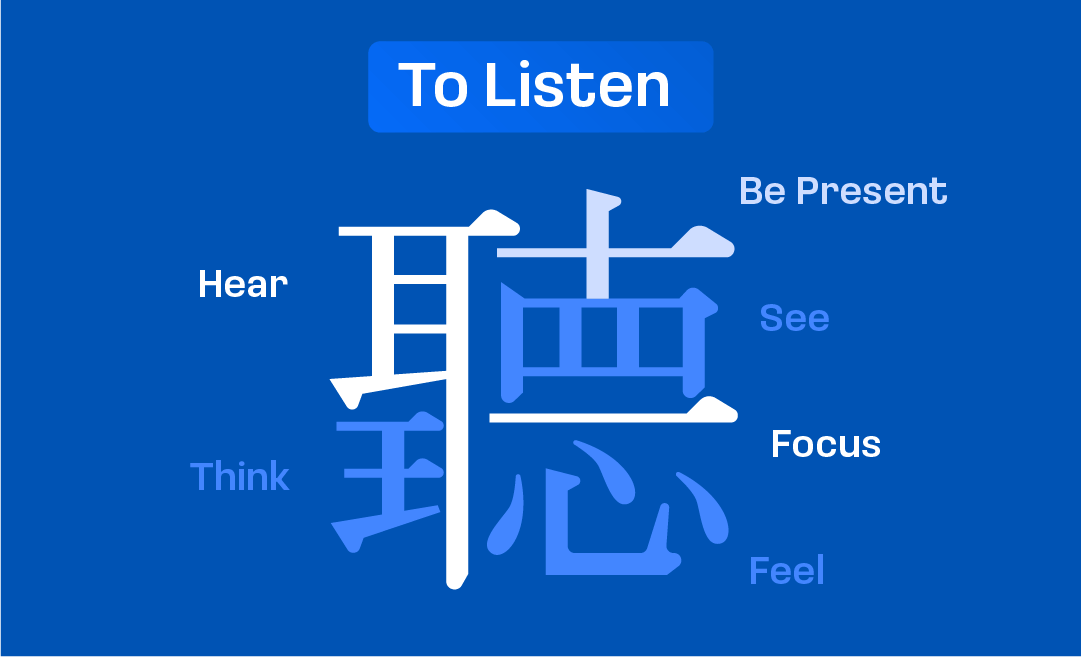How to improve your listening skills in a week
EPAM coach Dmytro Malinochka explains what prevents us from being attentive listeners, how to communicate effectively with others, and how to avoid missing important information.

The art of "listening"
— We spend a lot of time honing our presentation skills. Often, however, we completely ignore the art of listening, which is considered an equally important component of fruitful conversation. Listening involves more than just hearing; it also entails analyzing and comprehending what you have heard and seen, literally living through it and responding.
When we communicate with people who actively listen to us, we feel as though we are better understood. As a result, the conversation is more meaningful, and our conversation partners are more socially appealing to us. If we do not actively listen to others, and instead concentrate on something unrelated during a conversation, we only pick up a small portion of information being conveyed, perceiving the rest as white noise. So, how do you take in 100% of the information?
First, it helps to understand what prevents us from being an ideal listener without making an effort to do so. There are several reasons for this:
- External factors in your environment can cause interference, including things such as: the noise of repairs, the noise of air conditioning or heating, a poor connection, a child crying, or nearby conversations.
- The speaker’s behavior or traits, such as: accents, speech impediments, mumbling, or ambiguous or convoluted formulations of their thoughts.
- On the other hand, you as a listener may be hindered by: fatigue, hunger or thirst, multitasking, boredom, distraction, your attitudes towards the information being conveyed, or your need to concentrate on your response.
- The content of the message — whether it is too much information, a tedious or complex subject, etc.
The communication process will significantly improve if you monitor, recognize, and, remove barriers to listening whenever possible.
5 signs of an ideal listener

The hieroglyph above best describes a comprehensive approach to the listening process. Like other Chinese characters denoting complex concepts, it consists of several “simple” word characters.
To hear
- Allow the other person to finish their thought.
- Listen to them speak instead of preparing questions or answers in your head.
- Pause and reflect on what you heard.
To see
- Maintain eye contact.
- Smile.
- Note the other person’s body language and gestures.
To think
- Ask questions, including: open-ended questions (“Who?” “What?” “Where?” “When?” “Why?”), yes-no questions, questions seeking clarification (“Can you repeat…?” “Do you mean...?”), etc.
- Refrain from making assumptions about other people based on your biases and experiences rather than facts. Make sure that you and the other person are “on the same page.”
- Repeat, paraphrase, and summarize what you hear to confirm your understanding.
- Reframe the statement that you heard. The most well-known example involves a glass of water that is simultaneously half full and half empty. Or a more up-to-date version of that example: “We must submit the project in three hours. That means we have three hours.” Although the fact has not changed, the emphasis of the message has.
To be present (attentive)
- Take notes.
- Use open gestures.
- Nod and agree. This will demonstrate to the other person that you hear them. You can use encouraging phrases, like “Yes, of course!” “Indeed!” “Sounds good!” and “That’s interesting!”, etc.
To feel
- Practice empathy. Try to understand the other person’s point of view and emotions. For example: “It seems that you are angry.” “Looks like that makes you happy/worries you.” etc.
- Develop your self-awareness. Observe others' emotions without experiencing them yourself. Instead, pay attention to the changes in your emotional state that hearing about those emotions evoke.
- Provide feedback and interpret feelings as well as information. For instance: “You look pleased. Any good news?”
To focus
This dash indicates that we must listen with undivided attention and concentration. Because we think much more quickly than we speak, we tend to "autocomplete" sentences with our guesses and assumptions as someone is speaking. Silence all internal chatter and focus on the other person's words to listen effectively.
The key rule of any communication is to understand its purpose. Knowing what information you need to obtain, what you need to confirm, and what tasks you need to finish will help make the conversation productive. And don't forget to outline the purpose of the conversation clearly at its start.
How to improve your listening skills in a week
Monday
Use your ears. Observe the other person’s intonations, pitch, speed, pauses, and accents. Which of those clarifies the meaning of the words you are hearing?
Tuesday
Use your eyes. Observe the other person’s facial expressions, body language, posture, and gestures. What do you see that makes the information clearer to you?
Wednesday
Use your mind. Which approach to listening do you prefer: critical and analytical or objective and empathic? Do you “switch” between approaches depending on the person you are talking to? Note how your mind analyzes the information it receives.
Thursday
Use your heart. Tune in to the emotions the other person is showing while simultaneously employing all the senses you have trained the previous days.
Friday
Undivided attention. Finally, combine all the approaches you’ve just learned — you should be able to give the other person your full, undivided attention.
Our thanks to our partner site training.epam.com.
Go train it in our Discord channel.

.png)
